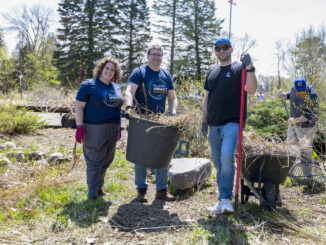by Janet Hawk, VP of Player Development & Guest Experience
Crank the rock n’ roll and grab your coffee — this is not a kumbaya chat about “being nice to VIPs.” I live in the wilds of Montana. I spend more nights in hotel rooms than my own bed, and I’ll happily jump on stage to belt an ‘80s power ballad. I love this business. But I’m going to be straight with you: If your host team is still working the same five usual suspects for every event, you’re leaving money, loyalty, and market share on the table.
Hosts are revenue drivers, not casino cruise directors. Our job is to grow profitable play, on purpose, with a plan. So let’s talk about how we stop the madness, set boundaries, and build target lists that actually move the needle.
The day I broke up with the usual suspects
Years ago, in Biloxi — back when shoulder pads were big, and slot handles were bigger — I was surrounded by hosts chasing whales and bragging about it. Meanwhile, I fished the mid-tier. I’d spot a $300 ADT player, treat them like a person instead of a points balance, and watch that ADT climb while my colleagues babysat high-maintenance “loyalists.”
Why? Because growth lives in the middle. Those players are already telling you they love to gamble — they just need attention, recognition, and a reason to choose you over the joint next door. You can’t buy love (double-match free play, anyone?). You earn it with relevance and relationships.
Own your book. Own your time.
Can we retire the myth that a good host is on call 24/7? Ted Lasso says, “Be a goldfish.” Ten-second memory for nonsense; firm boundaries for everything else.
I used to print my hours on the back of my card. I’d introduce my players to my team — VIP reps, favorite dealers, restaurants, and hotel. When I was off, the experience didn’t fail. That’s not abandonment; that’s consistency. It protected my sanity and the brand.
Also, stop waiting for someone to “give you a list.” You have a system. Log in. Build it. Work it. Weekly. You are your own first-line manager.
Player profiles: Your superpower
Back before players cards, my CRM was an Excel sheet and a pen. Today, you’ve got robust CMS notes fields, analytics platforms, and — if you’re lucky — QCI and friends. Use them like your paycheck depends on it (because it does).
Every conversation should add a tile to the mosaic:
- Favorite games and denominations
- Room type, food preferences, mobility needs
- Pets, kids, grandkids
- Sports teams, hobbies, music (Invite me to a country concert, and I know you don’t know me. Book Queensrÿche, and I’m already in the car.)
If you don’t know what drives a trip, you’re not marketing — you’re gambling.
Yield-manage your events (Yes, every one.)
Hotels do it. New Year’s Eve does it. Why don’t your tournaments and dinners? Stop letting the first 200 callers fill your room with low-yield players, then scrambling to “make room” for top value.
Yield it:
- Set capacity by value bands.
- Stagger invites (A, then B, then C).
- Give hosts quotas by band (e.g., X heads @ ≥$Y ADT).
- Track RSVPs and backfill with intention — right butts in the right seats, right heads in the right beds, right bets on the right felts.
That’s strategy, not hospitality theater.
The four strategies (If you’re doing anything else, stop.)
- Acquisition: New qualified players and new relationships (Yes, your steakhouse maître d’ can be your best bird dog.)
- Retention: Consistent, relevant touchpoints for core spenders
- Growth: Mid-tier with upside, low-frequency/high-spend, and cross-property steals
- Reactivation: Smart, timely outreach before competitors build a habit with your former regulars.
If your daily tasks don’t roll up into one of these, you’re busy — not productive.
Boundaries, honesty, and “call-a-host-itis”
I loved my guests. However, I didn’t love being the fix-it line for every mishap. Train your organization:
- Players club, F&B, hotel, pit: empower them to solve problems inside clear guardrails.
- Reserve hosts for revenue-driving work, not car-jumping and room-type squabbles.
- And please, stop saying “the customer is always right.” The full quote is “in matters of taste.” In gaming, we combine alcohol with losing money. Sometimes, “right” needs coaching and boundaries.
- Also, never lie. Hard conversations build long-term trust — and protect margin.
How I work a book (No magic, just discipline)
- Segment smartly. Don’t “host by card color.” Combine ADT/ADW, frequency, trip distance, recency, and trend lines (incliners vs. decliners).
- Plan weekly. Who’s my A-list for growth? Who needs a reactivation call? Which prospects am I testing?
- Pre-block strategically. If a player is a Sunday regular, book two months of Sundays. Ask for ETA on arrivals and enforce check-in windows.
- Follow through. Post-trip calls catch issues you’ll never see in the system and create amazing “you see me” moments.
- Guard the offer ladder. When someone pops a jackpot and inflates play, don’t overreact. Keep a little heat in your back pocket for when they settle back to their sweet spot.
What to stop doing (like, yesterday)
- Treating events as “first-come, first-served”
- Letting high-maintenance regulars monopolize your time
- Inviting golfers who don’t golf (or poker players to wine dinners they’ll skip)
- Measuring host performance only on retention
- Assuming you can’t comp — ask, take smart shots, track results
What to start doing (right after you finish this)
- Build target lists that prioritize mid-tier growth and low-frequency/high-spend.
- Meet weekly on goals, trends, and pipeline (acquisition and reactivation included in incentives).
- Share profiles across departments, so the whole property delivers VIP-level relevance.
- Use data like a map, not a rearview mirror — trend, don’t just total.
- Celebrate new relationships, not just maintained ones.
Quick-strike playbook (pin this above your desk)
- Identify 25 mid-tier players with upside; set a 90-day growth plan for each.
- Reactivate 10 lapsed players more than 90 days with personal, profile-based offers.
- Recruit five internal “bird dogs” (steakhouse, pit, front desk, slots) and teach them what a good lead looks like.
- Yield manage your next event: A-wave today, B-wave in 72 hours, C-wave if needed.
- Schedule follow-up calls 24–48 hours post-visit; log three profile facts from each.
- Run weekly incliner/decliner reports and call both groups with purpose.
Final riff
Hosts don’t keep their jobs by being the happiest people in the room. They keep them by growing revenue, building loyalty, and doing it sustainably. Make a plan. Work the plan. Be loud about the wins and honest about the misses. And when something goes sideways, take a breath, channel your inner Ted Lasso, and be a goldfish.
Then turn the volume back up and get back to work. The middle of your database is waiting — and it’s ready to rock.
Do you need to build a new host program? Just need a refresher to change your hosts into sales experts? To find out more about Raving’s custom host and player development programs, please reach out here.





